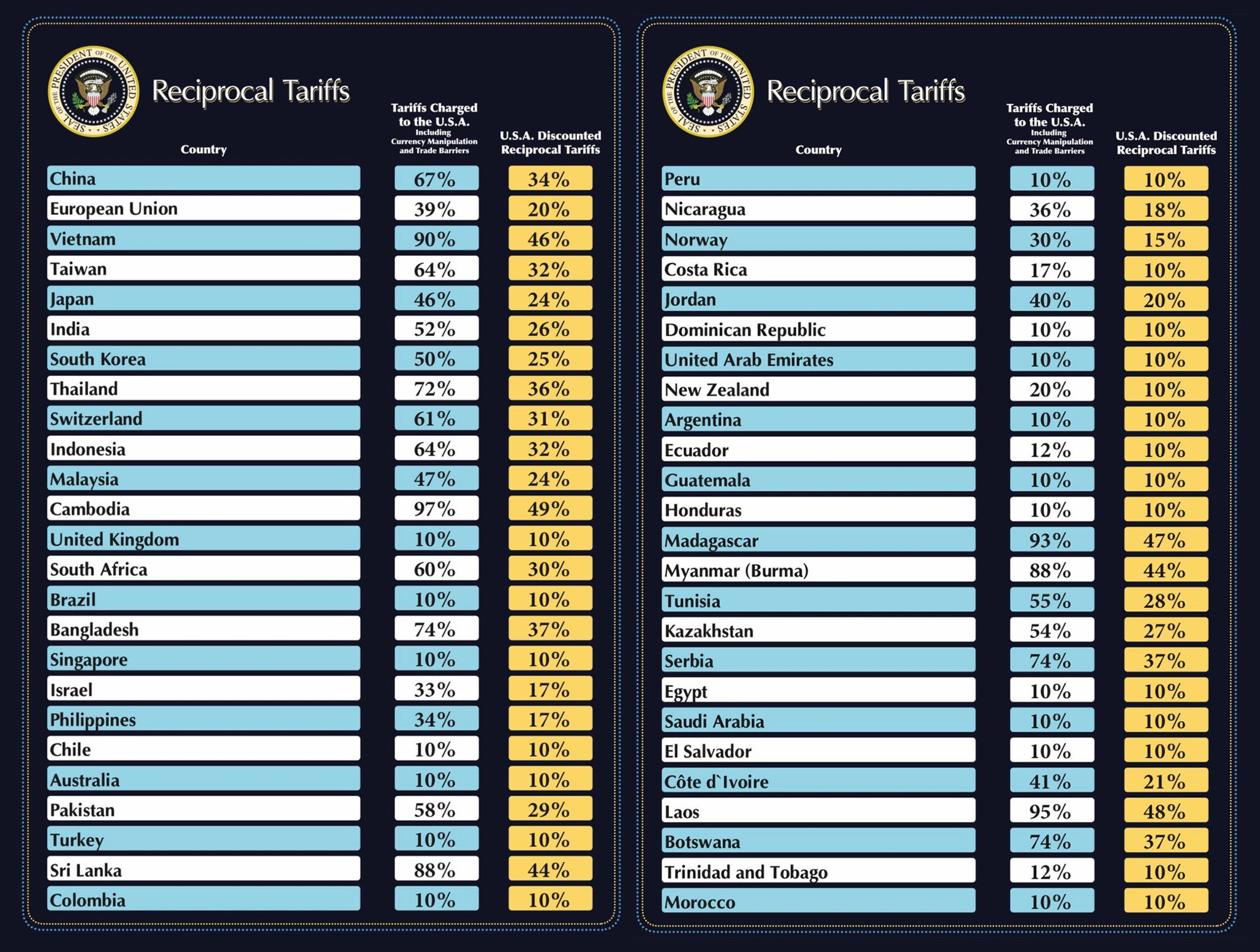
International trade has always been anchored on mutual benefits for two or more parties. However, when one party feels the need to amend the rules and conditions of engagement based on perceived greater benefits to itself, other parties often feel dissatisfied. This analogy has been echoed and discussed frequently by individuals and organizations around the world in recent days. It stems from the sweeping tariffs the United States government imposes on other countries in both the Global South and the Global North.
Several sources reveal that President Trump is imposing tariffs on other countries for the second time. Reports indicate that during his first term, similar tariffs, at varying percentages, were imposed on some nations. This second wave of tariffs, announced a few weeks ago, has sent ripples across the world. As the conversation on the tariff continues, our analyst examines a possible link between tariffs above 20% and increased public information-seeking from affected countries.
To gain deeper insights into the quantitative analysis of information-seeking patterns, views from Twitter (X) were also considered. Our analysis shows that the linkage between information-seeking behavior and tariff percentages offers a fascinating lens for understanding global digital curiosity. From countries with slightly above 20% to those with the highest percentages, the analysis reveals a snapshot of online engagement, indicating opportunities to understand how policy decisions may translate into increased online inquiries.
Register for Tekedia Mini-MBA edition 19 (Feb 9 – May 2, 2026): big discounts for early bird.
Tekedia AI in Business Masterclass opens registrations.
Join Tekedia Capital Syndicate and co-invest in great global startups.
Register for Tekedia AI Lab: From Technical Design to Deployment (next edition begins Jan 24 2026).

The most striking takeaway from our analysis is the sheer variability in search interest. While one might expect a direct correlation between tariff percentages and online inquiries, a higher tariff equating to greater concern and, thus, more searches, the reality is far more complex. Countries with steep tariffs often exhibit surprisingly low search volumes, and vice versa. This dissonance forces us to delve deeper to consider the factors that transcend mere percentages and truly drive information-seeking behavior.
One central factor is the perceived impact of the tariffs. It’s not the raw numbers that ignite digital curiosity, but the perceived threat to local economies, industries, and livelihoods. Consider Fiji, a clear outlier with exceptionally high search interest despite mid-range tariffs. This surge in digital inquiry likely stems from a heightened sense of vulnerability and the perception that the tariffs could significantly disrupt its economic landscape. In contrast, larger economies, while facing substantial tariffs, may exhibit lower search volumes due to perceived resilience or the breadth of their economic activities.

Media attention also plays a pivotal role. The degree to which local media outlets amplify and interpret the tariff announcements directly influences public awareness and, consequently, online search activity. Countries with robust and politically engaged media landscapes are more likely to see spikes in search interest, as citizens seek to understand the ramifications of these policies. Also, political awareness within a nation is a huge driver of searches. A population that actively follows and engages in political discourse is more likely to turn to online search engines for answers, even if the tariff is small.
From the X space, the views expressed by some individuals in these countries revealed varying levels of dissatisfaction. For example, an X user from India noted that the tariff would have a neutral effect on the textiles and jewelry sectors. This may be linked to the relatively moderate level of information-seeking observed in the country. The tweet reads: “From an Indian perspective, these #tariffs are neutral to positive, except for two sectors: textiles and jewelry.”
A mix of fear about price increases and optimism about domestic market opportunities in agriculture and industry was the focus of another user from the United States. This suggests a complex pattern of information-seeking, with people searching for both negative and positive impacts.


